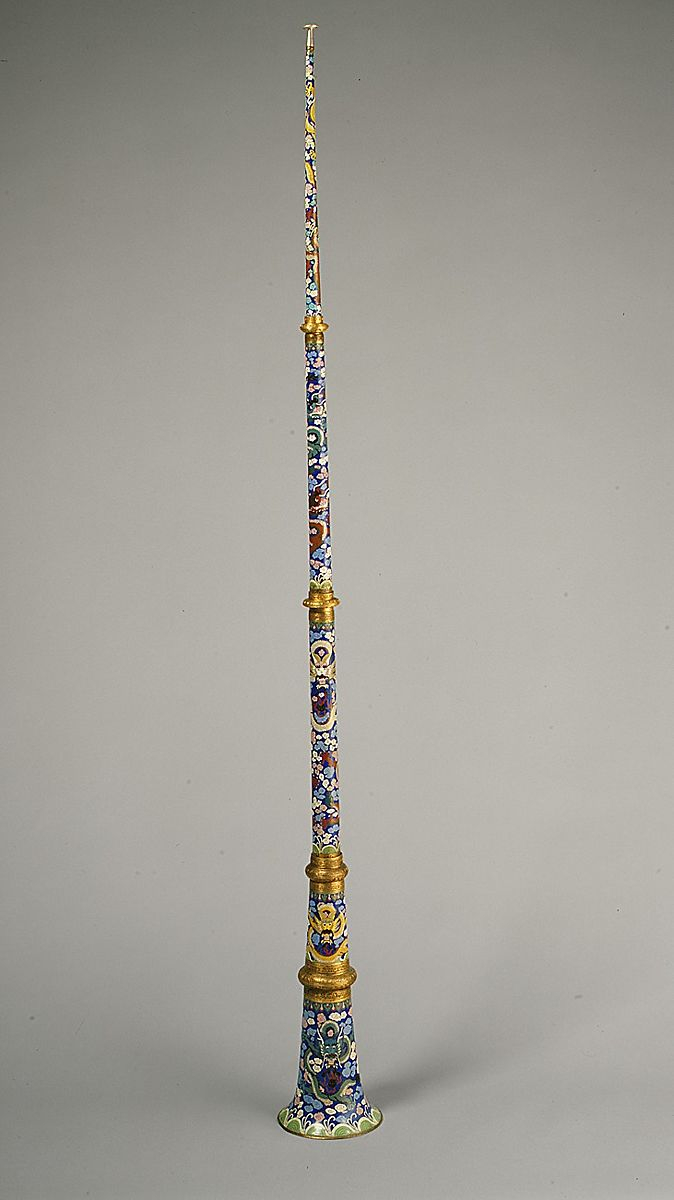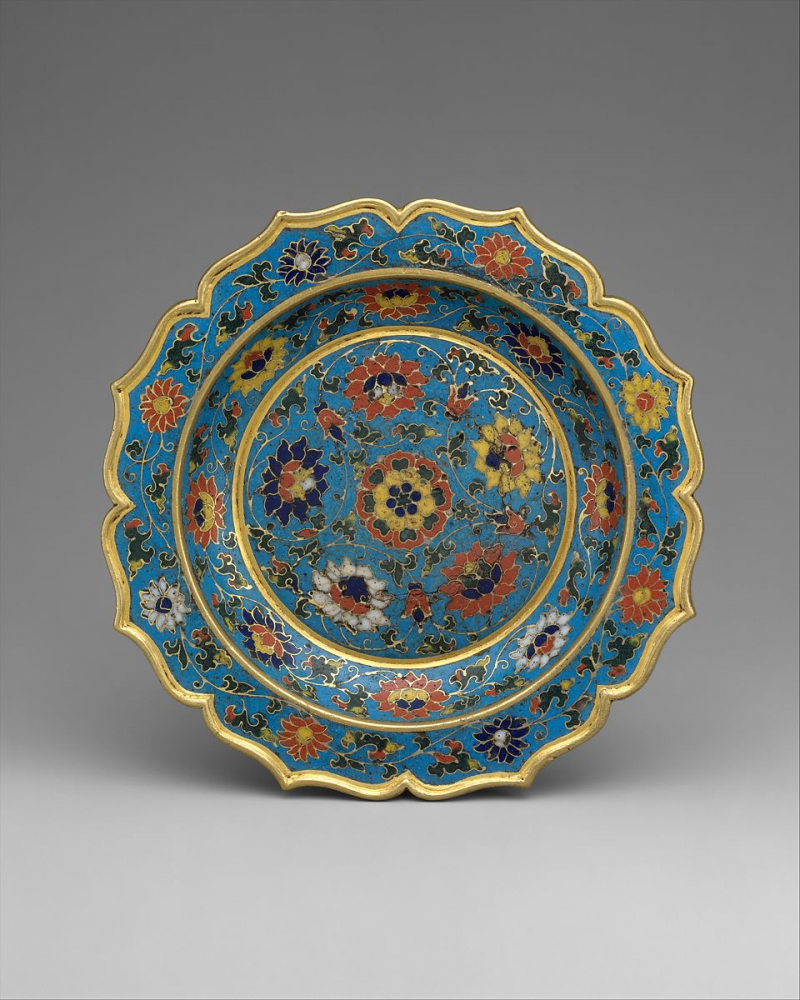Cloissone
During the early fourteenth to fifteenth centuries in China, foreign influence aided the development of cloisonné. The first securely dated Chinese cloisonné dates from the reign of Ming Xuande (1426–35). Cloisonné, on the other hand, is documented during the previous Yuan dynasty, and it has been suggested that the technique was introduced to China at that time via the western province of Yunnan, which received an influx of Islamic people under Mongol rule. A few cloisonné objects have been stylistically dated to the early Ming dynasty's Yongle reign (1403-24).
The art of cloisonné involves decorating metal objects with colorful glass paste that is encased in copper or bronze wires that have been bent or hammered into the appropriate pattern. The enclosures, often called cloisons (French for "partitions"), are typically glued or soldered to the metal body. Metallic oxide is used to color the glass paste, or enamel, before it is painted into the design's defined spaces. Typically, the vessel is burned at a low temperature of around 800°C. After firing, enamels frequently contract, therefore the process is repeated numerous times to fill in the designs. After this procedure is finished, the vessel's surface is rubbed until the edges of the cloisons are apparent. They are then gilded, frequently on the edges, interior, and base.
Cloisonné objects were primarily intended for use in the decoration of temples and palaces because their flamboyant splendor was thought appropriate for the function of these structures but not well suited to a more restrained atmosphere, such as that of a scholar's home. Cao Zhao (or Cao Mingzhong) expressed this viewpoint in 1388 in his influential Gegu Yaolun (Guide to the Study of Antiquities), in which cloisonné was dismissed as only suitable for lady's chambers. However, by the reign of Emperor Xuande, this ware had become highly valued at court.











